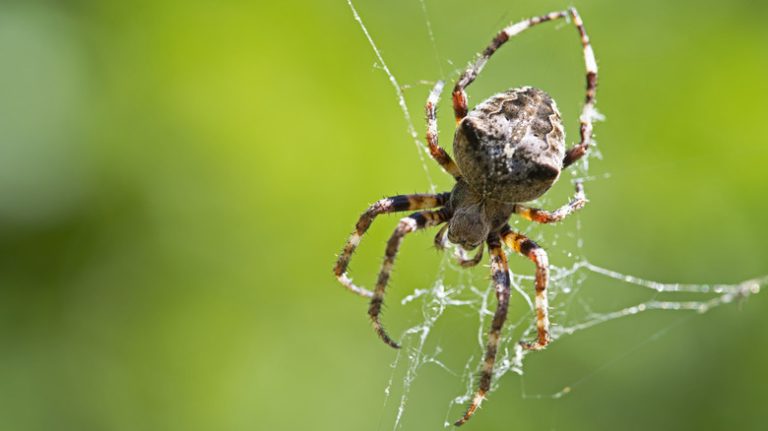Pests are a common problem for gardeners and farmers alike, as they can cause significant damage to plants. One of the most harmful pests is rust, a fungus that can infect many different plant species. Rust infections are easy to spot, as they cause orange or brown spots to appear on plant leaves, stems, and shoots. The fungus can quickly spread from one plant to another, especially during the warm and humid seasons.
To manage rust and other pests effectively, it is important to know what plants are most susceptible to them and how to prevent their appearance. Some plants, such as roses and certain hybrids, are particularly prone to rust infections. By planting resistant cultivars, providing proper watering and spacing, and using a spreader-sticker, you can help protect your plants against rust.
Another technique for managing pests is to be proactive in preventing their occurrence. This includes regular inspections of your plants to detect any signs of pests or diseases. By identifying and treating them early on, you can prevent them from spreading and causing further damage. As prevention is typically the best approach, it is important to understand the factors that contribute to the appearance of pests, such as poor soil conditions, lack of sunlight, and overwatering.
If pests do appear, there are several control methods available. Non-chemical options, such as removing infected plant parts, improving cultural practices, and introducing natural enemies, can be effective in managing pests. However, in some cases, chemical control may be necessary. It is crucial to choose legal and registered pesticides, following the instructions carefully to avoid any negative consequences.
In conclusion, managing pests is an essential aspect of gardening and farming. By being proactive in preventing their appearance, identifying them early on, and using appropriate control methods, you can protect your plants against pests and minimize their damage. Understanding the specific pests that affect your plants, their appearance, and the techniques to manage them can significantly contribute to a healthy and thriving garden or farm.
Rose Rust: Recognise, Prevent, and Control
Rose rust is a common fungal disease that affects rose plants, particularly those of the Rosa spp. It is caused by various species of rust fungi, which are harmful pests that can quickly spread and infect other plants. Understanding how to recognise and manage rose rust is important for maintaining the health and appearance of your roses.
Recognising Rose Rust
Rose rust can be identified by the appearance of orange-red, powdery spots or pustules on the leaves, stems, and even the flowers of rose plants. These spots are spore-producing bodies of the fungus and can easily be spotted, especially during the rust season.
To help recognise rose rust, here are some key characteristics:
- Round or irregular-shaped spots on the leaves
- Orange-red color, often with a rusty appearance
- Spots may coalesce and cover large areas of the leaves
- Presence of powdery spores on the undersides of the infected leaves
Knowing what rose rust looks like is crucial for early detection and prevention.
Preventing Rose Rust
Preventing rose rust begins with proper management and preventive measures. Here are some techniques to help protect your roses against rust infections:
- Choose rust-resistant rose cultivars, which are relatively less vulnerable to rust diseases.
- Practice good sanitation by removing and disposing of any fallen leaves or infected plant debris.
- Ensure proper spacing between rose plants to allow for good air circulation, as rust fungi thrive in humid and crowded environments.
- Avoid overwatering, as excess moisture can promote rust development.
- Fertilize your roses appropriately, as healthy plants are less susceptible to rust.
- Apply preventive fungicides according to the label instructions, especially during the rust season or when rust is prevalent in your area.
By following these prevention techniques, you can significantly reduce the risk of rose rust infections in your garden.
Controlling Rose Rust
If your roses become infected with rust, prompt action is necessary to prevent further spread and harm to your plants. Here are some steps to control and manage rose rust:
- Prune and remove any visibly diseased or infected parts of the plant. Make sure to disinfect your pruning tools between each cut to avoid spreading the fungus.
- Apply fungicide treatments to the affected plants, following the recommended application rates and intervals.
- Monitor your roses regularly for any signs of rust recurrence, and take immediate action to treat if detected.
- Consider consulting with a professional or seeking more information from reliable sources, such as local agricultural extensions or plant pathology departments, for specific management techniques and advice.
Remember, prevention is key in managing rose rust. By implementing preventive measures and promptly addressing any rust issues, you can keep your roses healthy and beautiful.
Detecting and identifying rose rust
Rose rust is a common fungal disease that can lead to mild or severe damage to rose plants. It is important to be able to detect and identify rose rust early on to prevent its spread and manage the consequences.
Rose rust is caused by a fungus called Phragmidium spp. It can appear as orange, powdery spots on the leaves, stems, and even flowers of rose plants. The infected areas may become swollen and eventually turn yellow or brown. In severe cases, the leaves may fall off and the overall appearance of the plant can be affected.
There are several techniques to help detect and identify rose rust. One way is to carefully inspect the leaves and look for the characteristic orange spots. These spots can often be mistaken for other leaf diseases, so it is important to distinguish rose rust from other problems. Another technique is to look for black pustules underneath the rust spots, as this is a sign of a mature rust infection.
If you suspect your rose plants have rust, it is important to take action quickly to manage the disease. One option is to remove and destroy all infected plant material. This includes removing and disposing of infected leaves, stems, and flowers. You can also prune back any dead or diseased wood. Another option is to use fungicides specifically labeled for rose rust. These chemical options can be effective in managing rust, but it is important to carefully follow the label instructions and consider the potential impact on beneficial organisms and non-target plants. Non-chemical management options, such as improving air circulation and avoiding overhead watering, can also help prevent rust infections.
It is worth noting that rose rust can spread to other plants, especially those in the rosa family and hybrids. Certain environmental factors, such as high humidity, warm temperatures, and moisture on plant surfaces, can contribute to the development and spread of rust. To protect your rose plants from rust, it is important to provide a suitable growing environment and promptly manage any infections that do appear.
In conclusion, being able to detect and identify rose rust is crucial for effective pest management. By using techniques such as visual inspection and understanding the specific symptoms and appearance of rust, you can quickly address any rust infections and protect your rose plants.
Background information on the harmful fungus
Many plants are vulnerable to fungal infections, and one of the most harmful fungi is known as the cedar apple rust fungus. This fungus can cause severe damage to trees and other host plants, leading to the spread of infections and potentially leading to the death of affected plants.
The cedar apple rust fungus is mostly found on cedar trees, but it can also infect other organisms such as roses. It is important to recognize the appearance of this fungus and take steps to prevent its spread and manage its effects on plants.
One of the main ways this fungus spreads is through spores that are released into the air. These spores can then infect other plants, especially during the growing season. To prevent the spread of the cedar apple rust fungus, it is important to detect infections early and take immediate action.
The best way to manage this harmful fungus is through a combination of prevention and control measures. Non-chemical methods, such as removing infected leaves and using a spreader-sticker on plants, can help reduce the spread of the fungus.
In addition, using fungicides can also be an effective way to control the cedar apple rust fungus. However, it is important to use these chemicals legally, according to the instructions provided by the manufacturer, and to protect yourself and others during the application process.
Each plant species may have specific factors that make them more or less vulnerable to the cedar apple rust fungus. It is important to research and understand these factors to better protect plants.
By taking the necessary steps to prevent and manage the spread of the cedar apple rust fungus, you can help protect your plants and maintain a healthy garden or orchard.
Rose rust prevention
Rose rust is a fungal disease that can infect roses and cause damage to their appearance and overall health. It is important to take preventive measures to avoid the spread of this fungus and protect your roses from becoming vulnerable to other pests. Here are some options for rose rust prevention and management:
- Identifying and removing infected plants: It is crucial to regularly inspect your roses and spot any signs of rust, such as orange or reddish-brown spots on the leaves. If you find any infected plants, remove them immediately to prevent the spread of the disease.
- Practicing good sanitation: Keeping your rose garden clean and tidy is key to preventing the spread of rust. Remove fallen leaves and other debris, as they can harbor rust spores and facilitate their spread.
- Practicing good watering techniques: Avoid overwatering your roses, as excess moisture can create a favorable environment for rust development. Water them at the base and avoid wetting the foliage. Additionally, water in the early morning so that the leaves have time to dry during the day.
- Avoiding overhead watering: Watering your roses from above can cause water droplets to cling to the leaves, providing a perfect breeding ground for rust. Instead, use a soaker hose or drip irrigation to water at the base of the plants.
- Using fungicides: If rust appears on your roses despite preventive measures, you can use a fungicide to manage the disease. Look for a fungicide specifically labeled for rose rust control, and follow the instructions carefully. It is important to note that fungicides should be used as a last resort and always in accordance with legal regulations.
- Avoiding planting susceptible plants near roses: Some plants, such as cedar and broadleaf evergreens, are more prone to rust disease. Avoid planting these near your roses to minimize the risk of rust infection.
- Implementing an alternate host prevention strategy: Rust fungi have many alternate hosts, including various weeds and other plants. By removing these host plants from your garden, you can minimize the spread of rust to your roses.
By following these preventive measures and practicing proper rose care techniques, you can help prevent and manage rose rust, protecting your roses and ensuring their overall health.


